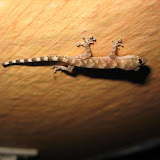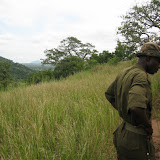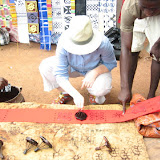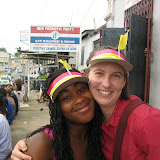Living with the wildlife

My bed is protected by a mosquito net, but I am somewhat skeptical as to its effectiveness because I have found spiders inside my bed. My room, additionally, is a know haven for wildlife. My roommate and were having a challenge from a rat the first week. It was chewing holes in our window-screen and coming into our room during the first week we were here. Our first attempt was to spray the screen with DEET and Permithrin, but this did not deter the rat. We put all the food into plastic bins with lids, which meant the rat had nothing to eat. But, he was still visiting. After a week or so, we discovered that if we filled the window well with plastic bags that he didn't like the sound of those as he was chewing a new holes in the screen and he stopped visiting. However, this may have coincided with more people moving into the dorm. In any case, we haven't had any problems in our room since. Lizards are a constant delight to me. There are some very large ones that have red...


